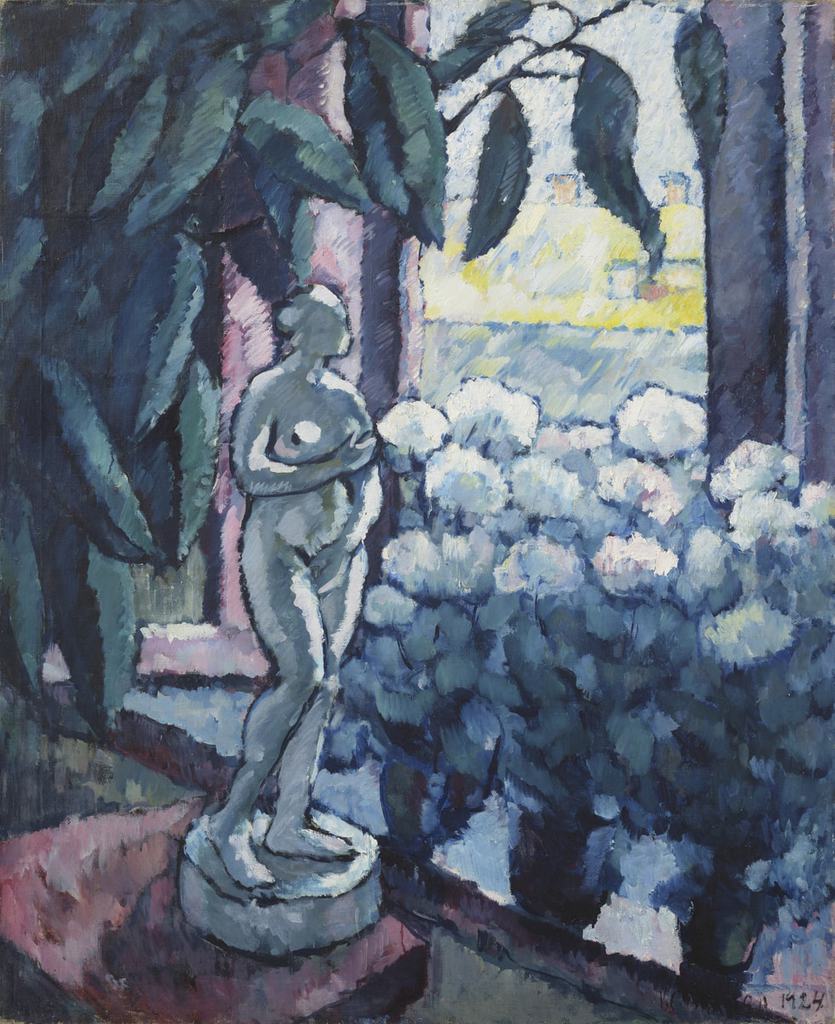
Ormisson painted still-lifes in abundance, as a rule choosing as his motif not so-called lifeless objects, but rather luxuriant bouquets of flowers placed in vases. While the bouquets in his earlier still-lifes are exceedingly multi-coloured, in this work Ormisson is far more laconic, for the first time as far as is known. Only white has been used in the overall colouring of the flowers in this painting evidently depicting chrysanthemums, which harmonises in turn with the light-coloured room around them, as well as with the peculiar plaster figure right beside the bouquet, and with the abundance of light visible through the window. Instead of revelling in colours, Ormisson is much more sparing, having chosen a more uniform, integral and modest colouring for the entire surface of the painting, which all the parts of the painting have to support. Contrasting, juxtaposing and harmonising light and dark has been important for Ormisson. While at the heart of the picture, Ormisson has set the focus on the interaction between the white flower blossoms, the light-coloured house roof visible through the window, and the white plaster figure, which is in turn bathed in light flooding in through the window, then at the edges of the picture, dark green house plants towering on the left edge, the purplish side of the window opening on the right, or the dark flower stems and pots frame all of this luminosity. The pots and stems form a dark frame in contrast with the brightness at the heart of the picture.
Ormisson’s brushing style has changed. It is much broader and generalising instead of the pointillist style. Ormisson does not pay any attention to charging details or the motif with dramaturgical tension this time either. With the help of lightness and darkness, the composition of the entire surface of the painting seems to have been his primary focus. In this way, the colouring also becomes more laconic, since the aim is not to demonstrate richness of colour, but rather to create a uniform, conceptual whole.